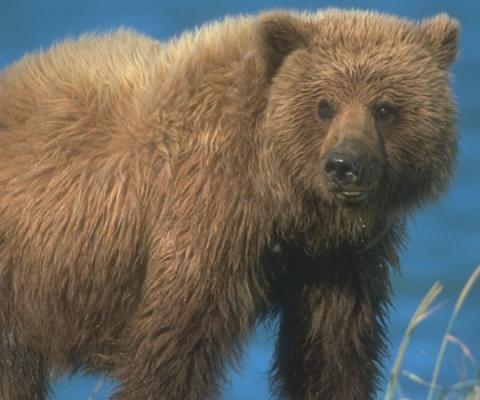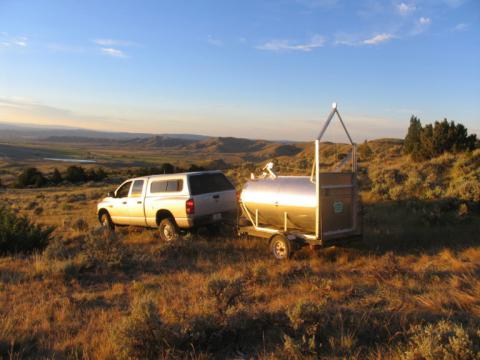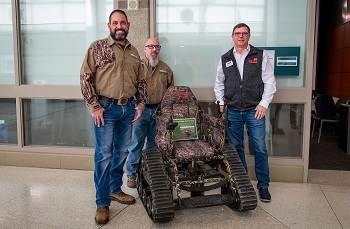Mention grizzly bears to three different people and you will get three different perceptions.
My Cat lady auntie will describe Ballou the bear, from the jungle book singing Bare Necessities to Mowgli.
My Rancher brother-in-law envisions a top apex predator capable of downing several large herbivores in a single rush.
My Native American neighbor speaks reverently of the spirit animal that still is revered by Native American peoples for his cunning and fearless nature.
No wonder this magnificent icon of American wildlife sparks such high emotion, conflict and legal action on every level of the American spectrum. Pointing out the predatory nature of Urus arctos Horribilis can start a bar room brawl, yet You Tube and news sources are full of footage of grizzlies being Grizzlies.
Add the challenge of actually living with the bears day-to-day and dealing with that predatory nature is much different than just vacationing for a few days in their environment. Vacationers can say, “We saw wild grizzly bears!”, farmers and ranchers who live day-to-day with these creatures point out the number of livestock killed and the danger of these massive predators getting used to coming into populated areas and creating a dangerous situation for people. Mention the need to reduce the numbers and you soon have a morass thicker and more complex than Middle East politics.
But Western states are not alone in this mega-fauna quagmire.
This is the same problem facing many African countries today. Botswana recently announced a return to hunting to help balance elephant populations, while maintaining the eco-tourist trade. The backlash from this announcement was tried in the court of public opinion and gave no thought to the safety and survival of the people who live in these areas and watch helplessly as their annual crops are decimated and their livestock scattered by rampaging elephants knocking down fences and buildings.
What was once one of America’s most endangered species has become one of conservation’s greatest success stories. Grizzly bears were listed as an endangered species in 1975. Since then, their population in the greater Yellowstone ecosystem has increased by 400 percent. Grizzly Bears are now officially or unofficially in at least four states. (as determined by food sources and quality of territory, not state lines, federal policy or the wishes of men). The Fish and Wildlife Service proposed delisting grizzly bears in 2016, but the issue has become bogged down in a flurry of lawsuits.
With a meteoric recovery of America‘s top apex predators come major problems. Unlike whitetail deer or even peregrine falcons that have both adapted to coexist in cities and densely packed urban areas, top apex predators do not make great roommates.
A 400 percent increase in individual bear population has to bring a corresponding increase in conflicts with people.
Bears see all possible food sources as their own property. Bears in areas with heavy elk harvests have learned to run to the sound of rifle fire, knowing the shot means at the least a gut pile and at best 500 pounds of prime elk on the ground. Mugger bears are known to run toward hikers, having learned you will drop your lunch-laden daypack and climb a tree when you see their approach.
With grizzly bears now wintering on prairie riverbanks in Montana, the number of human/bear conflicts has skyrocketed, while agency budgets remain largely unchanged. This leaves the U.S. Fish & Wildlife Services and Montana Fish, Wildlife & Parks strapped for resources.
On May 13, 2019, during their annual Lobby Day on Capitol Hill, SCI members advocated support for two bills asking the Department of the Interior to reissue previous grizzly bear delisting orders. The bills, H.R. 1445 and S. 614, both titled the “Grizzly Bear State Management Act of 2019,” were introduced jointly by Rep. Liz Cheney (R-WY) in the House, and Sen. Mike Enzi (R-WY) in the Senate earlier this year.
Both Safari Club International and the Rocky Mountain Elk Foundation maintain that grizzly bears should be managed by state wildlife agencies. The SCI position on grizzly delisting is that species recovery should lead to delisting and the restoration of state management authority. Regulated harvest should be a part of the management of recovered, delisted species. SCI supports the delisting of the grizzly bear.
On the other end of the spectrum, environmental groups are demanding that grizzlies be introduced to 12 of the lower 48 states. Their goal is to return grizzlies to most of their historical range. The reality is that not all land presents ideal bear habitat and X number of miles does not mean you can fit Y number of bears in so many square miles, like a seating arrangement at a wedding. Considering that humans now inhabit quite a lot of that historical bear habitat, that increases the probability of more dangerous bear/human conflict.
Learned behaviors like those listed above can be accidently reinforced by even savvy outdoors people. Bears are opportunistic and key on their senses and environment. As the outlaw Frank James famously put it, “The bank was right there and it looked easy so we robbed it.“
Couple a top predator’s lack of fear with a food opportunity and conflicts will happen. Easy food sources, including livestock and garbage dumps in close proximity to human occupation, create a perfect storm that would see these conflicts become more frequent and more deadly to both bears and humans.
As population numbers increase, top apex predators like Ursus arctos horribilis compete for food sources in a fixed environment. The adolescent and post prime animals get pushed to the outer edge. These animals end up ranging farther and farther out on the prairie and into garages, barns and backyards.
The second problem is sustaining isolated populations. Without connecting corridors isolated populations could be cut off and die out. Oddly, from what I can understand, the Montana grizzly bear population has propagated itself in most of the state’s mountain ranges largely of their own accord. Some grizzlies seem to be masters at slipping across wide open prairie and over to the next mountain range unobserved. Other grizzlies are not as accomplished at this skill.
One of the stop-gap solutions to these issues was found locally. The Montana Chapter of Safari Club International is proud to announce donation of a grizzly bear live trap to the U.S. Fish & Wildlife Service. The live trap will be used to help alleviate the rapidly increasing numbers of human/grizzly bear encounters that have happened over the past several years.
“One of the pillars of SCI’s Foundation is wildlife conservation,” said Tex Janacek, President of the Montana SCI Chapter. “Grizzly bear/human encounters are escalating at a substantial rate, causing real problems for Montana residents and grizzly bears. As Montanans helping other Montanans, our goal with the donation of this culvert trap is to help reduce conflict between grizzly bears and humans.”
The live trap, called a culvert trap, is being made by Teton Welding of Choteau, Montana.
John Steuber is the Billings-based Montana Director and Supervisory Wildlife Biologist with the United States Department of Agriculture’s Animal and Plant Inspection Service. “The portability is what makes this trap so useful,” he said. “We can transport it to wherever it’s needed.”
Steuben said his office will transfer each trapped bear to the U.S. Fish and Wildlife Service and the Montana office of Fish, Wildlife and Parks. Those offices will decide the final disposition of the bear, either euthanasia or relocation.
The future of grizzly bears to some extent will be determined in federal court. But to a larger extent it will be determined by the bears themselves and the people who live in and search out the wild places.–Joe Mancuso Public Relations Chair Safari Club International Montana Chapter




